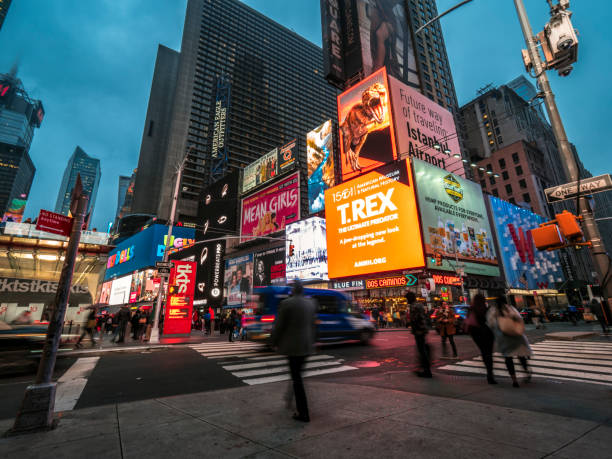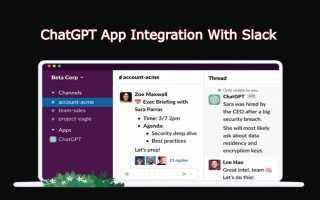You must have seen those huge signs along the road or high above buildings, showing off bright pictures or catchy phrases. Yes, we’re talking about billboards! These big boards are more than just decorations for our streets; they’re a special way for businesses to talk to us, whether it’s about a new movie, a cool toy, or a place to eat.
In this guide, we’re going to explore everything about billboard advertising. We’ll look into the different kinds of billboards you might spot, how much they usually cost, some cool examples, and exactly how they manage to catch our eye. This journey will show us why billboards are such a popular choice for sharing messages and how they can even make our daily drive a bit more interesting.
So, if you’re ready to learn about these giant signs and how they connect with us, stick around. We’re about to make sense of billboard advertising in a way that’s easy to understand and fun for everyone. Let’s get started!
Table of Contents
What is Billboard Advertising Called?
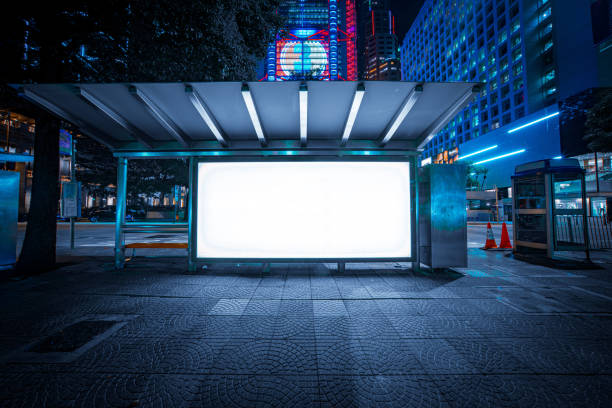
Billboard advertising is when people put big signs along roads or on tall buildings to show messages or pictures. It’s like when you draw a big picture and want everyone to see it, so you put it somewhere everyone can look.
These big signs can tell us about new movies, cool toys, or places to eat. They are very big and high up, so lots of people can see them when they are walking or driving by. This way, companies can share their news with lots of people at once.
See Also: How Social Media Can Leverage SMM Panels to Make Significant Connections With Target Audience
Types of Billboard Advertising
When considering billboard advertising and pondering which option will best elevate your brand, one critical question arises: What type of billboard advertisement will resonate most effectively with your audience? To address this, we’ve identified solutions that not only cater to diverse marketing strategies but also promise to enhance your brand’s visibility.
Among the myriad of billboard options, we focus on those that offer instant branding opportunities to propel your business forward. Below, we present the top 10 types of billboard advertising tailored to make a significant impact.
1. Traditional Billboards
Traditional billboards are the classic, static billboards you see along highways and busy streets. They’re usually made of vinyl and can showcase anything from product ads to public service announcements. These billboards are great for reaching a wide audience, as they’re visible 24/7.
Companies often use them for long-term campaigns because they’re cost-effective for the amount of exposure they provide. However, their static nature means the message stays the same until the billboard is replaced or updated, which can be a limitation for time-sensitive advertising.
2. Digital Billboards
Digital billboards are modern, electronic versions of traditional billboards. They display ads as digital images that can change every few seconds, allowing multiple advertisers to share the same billboard space. These billboards are highly visible, day or night, thanks to their bright LED screens.
Digital billboards offer the flexibility of changing ads quickly and can even display real-time information or interactive content. They’re ideal for advertisers looking to make a high-impact statement with dynamic visuals or timely messages.
3. Mobile Billboards
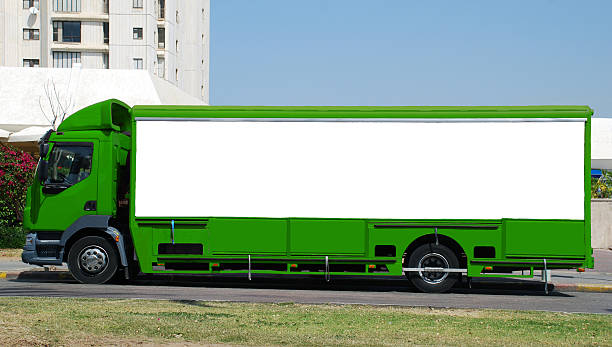
Mobile billboards are advertisements displayed on the sides of vehicles, such as trucks or trailers, designed specifically for advertising purposes. This mobility allows ads to be brought directly to target audiences, whether it’s in urban centers, on busy highways, or at special events.
Mobile billboards stand out because they can go where other billboards can’t, offering flexibility and targeting capabilities unmatched by stationary billboards. They’re perfect for campaigns aiming to increase brand visibility in specific locations or during particular events. If you
4. LED Truck Billboards

Image Via Bulldog Billboards
LED truck billboards take mobile advertising a step further by combining the mobility of traditional mobile billboards with the dynamic capabilities of digital screens. These trucks are equipped with large LED panels that can display vibrant, moving images or videos, making them impossible to ignore.
LED truck billboards are excellent for night-time advertising or in dimly lit areas, as their bright displays capture attention easily. They’re particularly effective for short-term promotions, live updates, or interactive campaigns.
5. Wallscapes
Wallscapes are large, mural-like advertisements that are painted or attached directly to the sides of buildings. They can be found in urban areas, particularly in cities with high pedestrian and vehicle traffic.
Wallscapes allow for creative and impactful displays that can become iconic parts of the urban landscape. They offer a canvas for advertisers to create visually stunning, large-scale ads that can make a significant impact on brand recognition and recall. Wallscapes are ideal for long-term campaigns aiming to make a lasting impression.
6. Transit Advertising
Transit advertising refers to ads placed on public vehicles and stations, including buses, subways, trains, and trams. This type of advertising can take the form of exterior vehicle wraps, interior posters, or station displays. Transit advertising reaches audiences during their daily commutes, providing repeated exposure to ads.
It’s an effective way to target specific demographics based on the transit routes and locations. Transit ads are excellent for campaigns aiming to increase visibility across a wide area or within specific communities.
7. Bridge Banners
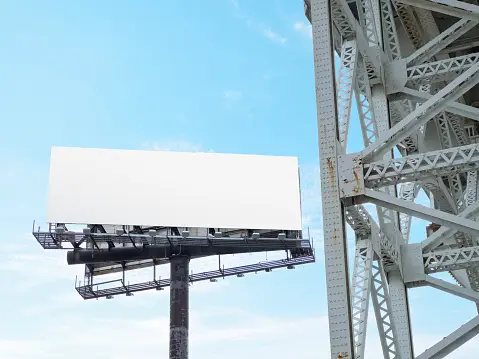
Bridge banners are large advertisements displayed on pedestrian or roadway bridges. They offer high visibility to both pedestrians and drivers, making them an effective medium for reaching a broad audience.
Bridge banners are particularly useful in areas where traditional billboards are limited or prohibited. They can be used for a variety of campaigns, from local events to large-scale national advertising efforts, providing a unique opportunity to capture attention in busy urban settings.
8. Inflatable Billboards
Inflatable billboards are large, air-filled structures that can be placed in various locations, including water bodies, open fields, or urban centers. They’re eye-catching due to their size and mobility, offering a novel way to draw attention to advertising messages.
Inflatable billboards are perfect for promotional events, product launches, or as temporary signage at high-traffic events. They provide a flexible and dynamic advertising solution that can be customized and moved as needed.
9. 3D Billboards
3D billboards add a three-dimensional element to billboard advertising, creating a more engaging and memorable visual experience. These billboards use sculptural elements, special lighting, or technology to create the illusion of depth, making the advertisement stand out.
3D billboards are highly effective for capturing attention and leaving a lasting impression on viewers. They’re best suited for creative campaigns that aim to differentiate a brand or product in a crowded market.
10. Eco-Friendly Billboards
Eco-friendly billboards incorporate sustainable practices and materials into their design and execution. This can include using solar-powered lights, biodegradable materials, or even integrating live plants into the billboard structure.
Eco-friendly billboards not only convey an advertising message but also demonstrate a company’s commitment to sustainability. They’re an excellent choice for brands looking to align their marketing efforts with environmental values and attract eco-conscious consumers.
Each type of billboard advertising offers unique advantages and can be tailored to meet specific campaign goals and target audiences. By understanding the strengths and applications of each, advertisers can effectively leverage billboard advertising to maximize their visibility and impact.
See Also: 30 Best WooCommerce Plugins for Your WordPress Store
How Does Billboard Advertising Work?
Billboards are like big storybooks that don’t need to be opened. They stand tall and wide so lots of people can see them, whether they’re walking by or driving in a car. The pictures and words on these billboards are made to catch our eye and make us think or feel something special about what we see.
Some billboards use bright lights and even move a little, like the ones you see on digital mobile billboards or LED truck billboards. These are super cool because they can change their pictures and messages all day long. This means they can share different stories with us at different times, making sure we see something new and exciting.
The way billboard advertising works is by being in places where lots of people can see them. This could be on a busy road, near a shopping mall, or in the city center. The idea is to put the billboard where it can say hello to as many people as possible. When businesses choose a good spot for their billboard, more people see their message, and that helps the business share what they do or sell with lots of people.
So, next time you see a big sign while out and about, you’ll know it’s working hard to tell you something interesting, using bright colors, big words, and sometimes even moving pictures to grab your attention and share a story or idea. That’s how billboard advertising works, making sure we see and remember all sorts of things, even when we’re just passing by.
Setting up a billboard for your brand sounds exciting, right? It’s like creating a giant poster that everyone can see. Let’s walk through some simple steps and tips to make your billboard stand out, along with some cool examples to spark your imagination.
See Also: From Social Media to SEO: A Comprehensive Look at Digital Marketing for Catering Companies
How to Setup Billboard Advertising Design Tips and Examples
1. Keep It Simple
The best billboards are easy to understand at a glance. Use big, bold letters and simple messages. Think about driving by and being able to read it in just a few seconds. For example, if you’re advertising a new ice cream shop, a big, colorful picture of an ice cream cone with the words “Yummy Ice Cream Here!” works great.
2. Use Bright Colors
Colors that pop can make your billboard stand out. But choose colors that go well together and make your message easy to read. A billboard for a beach resort might use bright blues and sandy yellows to catch your eye and make you think of the beach.
3. Make It Memorable
A catchy phrase or a funny picture can make people remember your billboard. When they think about what you’re advertising, you want them to remember your billboard. Like, if you’re selling bicycles, a picture of a bike with wings flying over traffic with the words “Fly Past Traffic” could stick in people’s minds.
4. Location, Location, Location
Putting your billboard in the right spot is key. You want it where lots of people will see it. If you’re advertising a new video game, placing your billboard near a shopping mall full of families and young people might be a smart move.
5. Digital and Mobile Billboards
Don’t forget about digital and mobile billboards. Digital billboards can change messages, so you can share different ads at different times of the day. Mobile billboards, like those on trucks, can move your ad around to different places, reaching more people.
For instance, a digital mobile billboard advertisement could show changing images of different dishes for a restaurant, making everyone hungry and curious to try them.
Examples to Inspire You
A Simple Message: A billboard for a pet store with a huge, adorable puppy and the words “Need a Friend? Adopt Today!” Simple, sweet, and straight to the point.
Bright and Bold: An ad for a sports drink with a neon green bottle and splashing water against a dark background. It looks refreshing and catches the eye.
Funny and Memorable: A car insurance billboard with a picture of a toy car crashed into a giant coffee cup, with the tagline “Oops! We’ve Got You Covered.”
Creating a billboard that people will notice and remember isn’t too hard if you keep these tips in mind. Think about what makes your brand special and how you can share that with the world in a big, bold way.
See Also: 12 Types Of Propaganda Techniques Used In Advertising
Successful Brand Examples
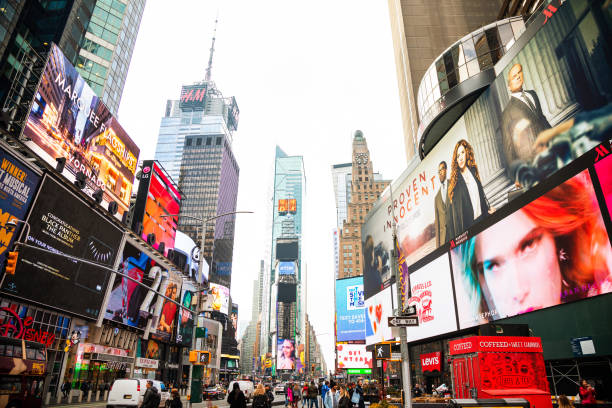
1. Coca-Cola: Happiness on Display
Coca-Cola has mastered the art of billboard advertising by creating displays that evoke feelings of joy and companionship. One of their most memorable campaigns featured a giant, smiling Coca-Cola bottle that seemed to interact with passersby, reminding them of the happiness that comes with sharing a Coke.
This strategy goes beyond selling a drink; it sells an experience, associating the brand with positive emotions and moments of connection. By consistently using vibrant colors and engaging visuals, Coca-Cola’s billboards stand out and create lasting impressions, making them a go-to example of effective billboard advertising.
2. McDonald’s: The Directional Billboard
McDonald’s cleverly uses billboard advertising to guide hungry travelers directly to their nearest restaurant. In one innovative campaign, they transformed a series of billboards into giant, brightly lit arrows pointing the way to McDonald’s, with the distance marked on them.
This practical use of billboards not only captures attention but also provides value to the audience, making McDonald’s a top-of-mind choice for a quick meal. The simplicity of the message combined with the utility of the direction creates a powerful advertising tool that drives traffic directly to their doors.
3. Apple: Minimalism Speaks Volumes
Apple’s billboard advertising strategy focuses on minimalism, showcasing their products with sleek, simple designs against a clean background. This approach highlights the elegance and advanced technology of Apple products, making them stand out in a visually cluttered environment.
By using high-quality images and very little text, Apple conveys the superiority and desirability of its products, appealing to consumers’ aspirations for sophistication and innovation. This minimalist approach has helped cement Apple’s position as a leader in tech, demonstrating that sometimes, less is more.
4. Spotify: Personalized Billboards
Spotify took a unique approach by using data-driven insights to create personalized billboard ads. They featured funny and quirky user habits in their campaigns, such as “Dear person who played ‘Sorry’ 42 times on Valentine’s Day, what did you do?” This strategy not only engaged viewers with humor but also showcased Spotify’s personalized listening experience. B
y highlighting real user interactions, Spotify’s billboards felt more relatable and reinforced the brand’s image as a user-centric platform. This innovative use of data made their advertising memorable and showcased the brand’s personality.
5. Nike: Just Do It with Inspiration
Nike’s billboard campaigns often feature inspirational messages alongside top athletes, embodying their “Just Do It” slogan. By associating their brand with perseverance, ambition, and the thrill of achievement, Nike’s billboards do more than advertise products; they inspire action.
Whether it’s a massive image of a basketball star leaping for a slam dunk or a runner breaking through the finish line, Nike’s visuals are designed to motivate and resonate emotionally with viewers. This strategy strengthens Nike’s identity as a brand that supports personal bests and athletic excellence, making their billboards a source of inspiration for many.
See Also: What Is Propaganda? Demystifying the Tactics and Techniques Behind Persuasive Messaging
Advantages and Disadvantages of Billboard Advertising
Everything we use comes with its set of benefits and drawbacks, and billboard advertising is no exception. Let’s delve into the pros and cons of billboard advertising to gain a clearer understanding of its impact.
Advantages of Billboard Advertising
- Gets Noticed Easily: Billboards are big and hard to miss. When you put up a colorful and bright billboard, people driving or walking by will likely see it, even if they’re not looking for it. This means your message gets out to lots of people, all day, every day.
- Reaches a Wide Audience: Since billboards are usually placed in busy areas, your ad can be seen by almost everyone who passes by, from kids going to school to adults going to work. This is great for letting a lot of different people know about your brand or product.
- Simple Messages Stick: Billboards are perfect for simple, clear messages. Because people usually see them for just a few seconds, a catchy phrase or a cool picture can make a big impression that people remember later.
- Good for Local Info: If your business is local, a billboard can be super helpful. It tells people nearby about your shop or service, so they know where to find you when they need something you offer.
Disadvantages of Billboard Advertising
- Costs Can Add Up: Putting up a billboard isn’t cheap. You have to pay for the space, the design, and the making of the billboard. For small businesses, this cost can be a big deal.
- Short Viewing Time: People usually see billboards while they’re moving, so they don’t look at them for long. This means your ad needs to be quick to understand, which can be tricky if you have a lot to say.
- Not Easy to Change: Once your billboard is up, changing the message or design is not easy or cheap. This means you need to get it right the first time, or you might be stuck with an ad that’s not working as well as you hoped.
- Limited Engagement: Billboards are good for getting attention, but they don’t let you interact with your audience. You can’t answer their questions or talk to them like you can online or in person.
Billboard advertising has its ups and downs, but it can be a powerful way to share your message with the world. Whether it’s the best choice for you depends on what you need, what you want to say, and how much you’re ready to spend.
Billboard Advertising Statistics
Just like benefits and drawbacks, every advertising method talks in numbers that highlight how it can benefit a business. Billboard advertising is no different, with some pretty interesting stats showing why it’s still a popular choice for getting the word out. Let’s dive into some numbers that paint a clear picture of billboard advertising today.
Wide Reach: Did you know that more than 70% of drivers say they notice billboard messages while driving? This shows how effective billboards can be in catching people’s attention when they’re on the move.
Memorable Messages: Around 55% of people who see a billboard ad will remember what it was about a week later. That’s more than half the people who see it, keeping your message in mind long after they’ve passed by.
Big Impact: Businesses find that for every dollar spent on billboard advertising, they get about $5.97 in return on sales. This shows that billboards can be a smart investment, bringing in more money than what you put in.
Digital Growth: Digital billboards are becoming more popular, with their numbers growing by about 10% each year. They’re eye-catching and can be updated quickly, making them a flexible option for advertisers.
Local Love: About 7 out of 10 billboards promote local businesses, helping communities know what’s available nearby. This is great for local shops and services looking to draw in customers from the area.
These statistics show that billboard advertising has a strong place in the marketing world, offering wide reach, memorable impacts, and good returns on investment, especially for local businesses. Whether it’s a traditional billboard or a flashy digital one, this form of advertising continues to be a powerful tool for getting messages across to a broad audience.
See Also: What is Lift Analysis and How is it Calculated?
Billboard Advertising Cost
One of the biggest questions people have about billboard advertising is, “How much does it cost?” It’s similar to seeing a toy you want and wondering how many allowances you’ll need to save up to buy it. Let’s simplify this to help you understand what you might need to budget for to get your message onto one of those large signs.
Traditional billboards, the large signs you see by the roadside or on buildings, have varying costs. In a small town, the price might be around $250 to $750 a month. However, in a big city or along a busy highway, this can skyrocket to between $2,000 and $15,000 a month. The difference is similar to buying a snack from a small local shop compared to a busy airport.
Digital billboards, which are like giant outdoor TVs showing different ads every few seconds, tend to be pricier because they can display multiple ads in rotation. Their costs range from about $1,200 to over $15,000 a month, depending on location and footfall. It’s akin to subscribing to a premium streaming service that offers a variety of viewing options.
Mobile billboards are advertisements on the sides of trucks that travel around town, acting like moving posters. The cost for these can be anywhere from $800 to $2,500 per week, somewhat like renting a video game where you pay for the duration you use it.
LED truck billboards are a step up, featuring large LED screens on trucks that can show bright, vivid videos. These can be particularly eye-catching at night and might cost between $1,000 and $14,000 a week, depending on the route and duration of the ad campaign. This is similar to choosing a limousine over a regular taxi for a special occasion; it’s more noticeable and offers a bigger impact.
Remember, these mobile billboard advertising cost are just a starting point. The final price can change based on how long you want your ad to run, the design of your ad, and even the time of year. It’s like when you go to buy ice cream and the price changes if you choose extra toppings or a bigger cone. The good news is, with so many options, you can find a billboard that fits your budget and helps you share your message with the world.
See Also: How Companies Are Leveraging Artificial Intelligence in Marketing and Advertising
How to Calculate Billboard Advertising ROI
Figuring out if the money you spend on billboard advertising is worth it is like checking if the lemonade stand you set up is making more money than it costs to make the lemonade. ROI, or Return on Investment, tells you exactly that—whether you’re getting more out of your billboard ads than what you’re putting in. Let’s break down how to calculate your billboard advertising ROI in a way that’s easy to understand.
1. Know Your Costs: First, you need to know how much you’re spending. This isn’t just about how much you pay to put your ad on a billboard. Think about everything from designing the ad to the cost of renting the billboard space. It’s like adding up the cost of lemons, sugar, and cups for your lemonade stand.
2. Track Your Sales: Next, you need to see if more people are buying what you’re selling because of the billboard. This can be tricky, but you can ask your customers how they heard about you or look at sales before and after the billboard went up. It’s like noticing more people coming to buy your lemonade after you put up a big sign.
3. Use a Simple Formula: Now, take the extra money you made from sales (after the billboard ad started), and subtract the total cost of the billboard ad. This tells you how much profit (or loss) you made from the ad. Then, divide that profit by the cost of the billboard ad and multiply by 100 to get your ROI percentage. Here’s what it looks like:
ROI=(Cost of Ad Profit from Ad−Cost of Ad)×100
4. Understand Your Number: If your ROI number is positive, that means you made more money than you spent. A negative number means you spent more on the ad than you made back. It’s like figuring out if your lemonade stand made enough money to cover all your costs and give you some extra pocket money.
Remember, calculating your ROI helps you see if billboard advertising is a good way to spend your marketing money. It’s like checking if your lemonade stand is a good business or if there are better ways to earn money.
See Also: The Ultimate Guide To Make Money Online
Wrapping Up
We’ve learned a lot about the different types, how much they cost, and how they can help businesses shine. From the classic roadside giants to flashy digital screens and mobile billboards, each type has its way of catching our eye and telling us a story. We also explored how to figure out if the money spent on these big ads is bringing in more customers.
Remember, the goal of billboard advertising is to share your message with as many people as possible clearly and memorably. Now that you know the basics, you’re ready to make those big signs work for your business.
